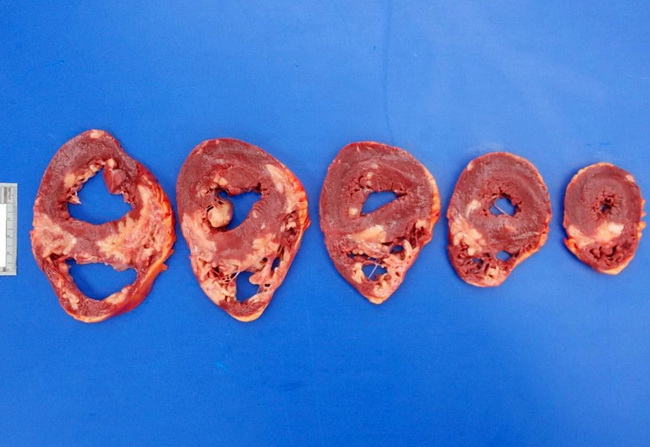Cardiac Sarcoidosis : Introduction


Comments:
Sarcoidosis is a chronic granulomatous disease of unknown etiology affecting multiple organs and tissues. It is characterized by the presence of non-caseating granulomas. Most cases occur in patients 25 to 60 years of age with a slight female predominance. Highest prevalence rates are reported in Northern European and African-American populations. Familial clustering is seen in some cases. Association with HLA DQB*0601 and tumor necrosis factor allele TNFA2 has been reported. Tissue/Organs Affected: Sarcoid granulomas have been observed in virtually all body organs. Lungs are affected in more than 90% of patients with sarcoidosis. Other common sites include hilar lymph nodes, heart, liver, spleen, skin, eyes, parotid glands, and muscles. Symptomatic cardiac involvement occurs in about 5% of sarcoidosis patients. Clinically silent cardiac disease is believed to be present in a much greater proportion of cases (about 25% based on autopsy studies). The prevalence of cardiac sarcoidosis appears to be increasing due to better and more thorough imaging techniques. Clinical History: This specimen is from a 30 y/o male who died suddenly unexpectedly. Multiple yellow-white tumor-like infiltrates (sarcoid lesions) are present throughout the heart. Non-caseating granulomas were present in his heart, lungs, muscle, and other tissues. There was total effacement of conduction system/bundle of His and massive replacement of myocardium by granulomas and scarred areas. Image courtesy of: Megan Quinn, MD; used with permission. References:Miller, D. V. & Revelo M. P. (2014). Diagnostic Pathology - Cardiovascular. Amirsys Publishing, Inc.Birnie, D. H. et al. Cardiac Sarcoidosis. Journal of the American College of Cardiology; Vol. 68, No. 4, 2016; p 411-421.



